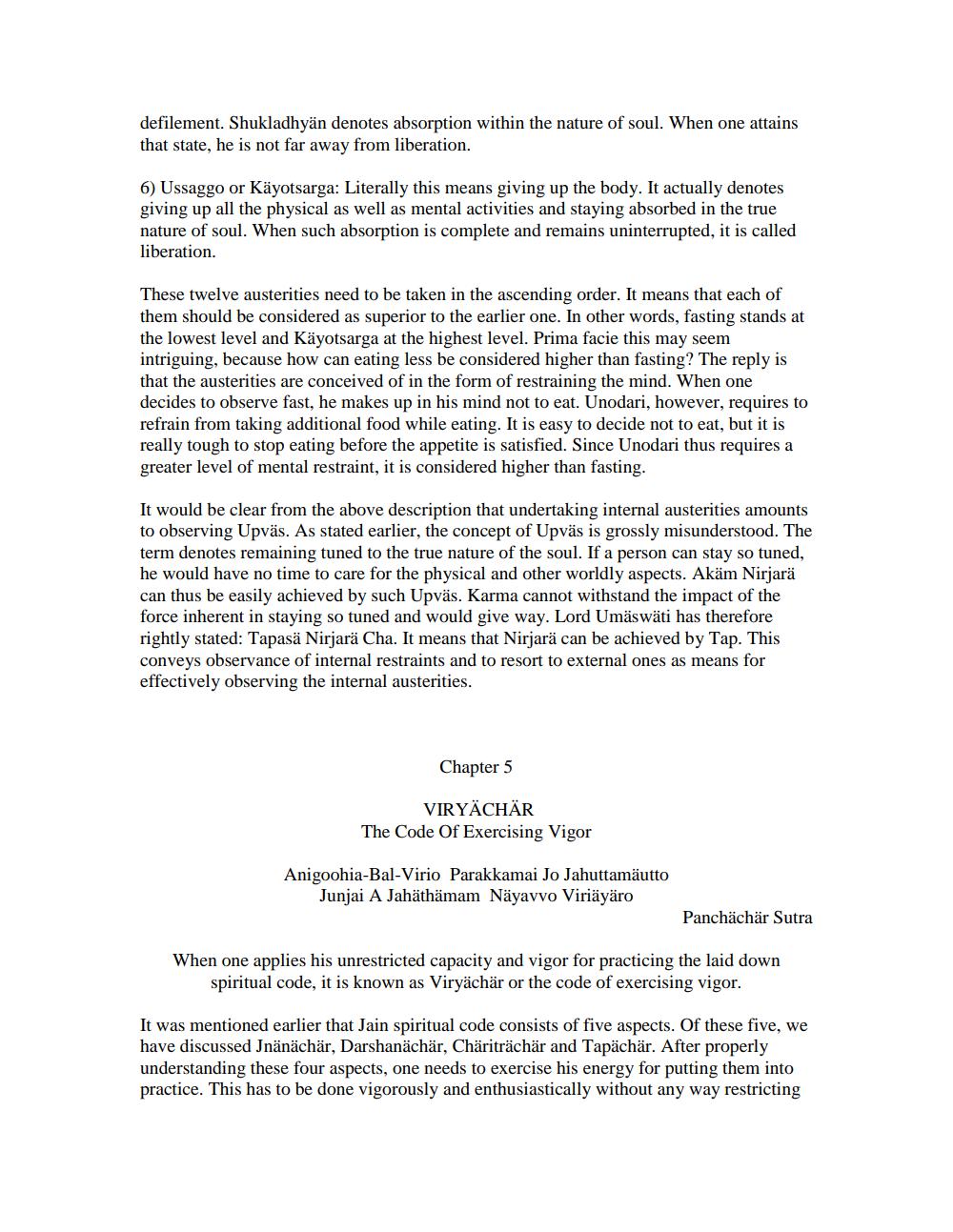________________
defilement. Shukladhyän denotes absorption within the nature of soul. When one attains that state, he is not far away from liberation.
6) Ussaggo or Käyotsarga: Literally this means giving up the body. It actually denotes giving up all the physical as well as mental activities and staying absorbed in the true nature of soul. When such absorption is complete and remains uninterrupted, it is called liberation.
These twelve austerities need to be taken in the ascending order. It means that each of them should be considered as superior to the earlier one. In other words, fasting stands at the lowest level and Käyotsarga at the highest level. Prima facie this may seem intriguing, because how can eating less be considered higher than fasting? The reply is that the austerities are conceived of in the form of restraining the mind. When one decides to observe fast, he makes up in his mind not to eat. Unodari, however, requires to refrain from taking additional food while eating. It is easy to decide not to eat, but it is really tough to stop eating before the appetite is satisfied. Since Unodari thus requires a greater level of mental restraint, it is considered higher than fasting.
It would be clear from the above description that undertaking internal austerities amounts to observing Upväs. As stated earlier, the concept of Upväs is grossly misunderstood. The term denotes remaining tuned to the true nature of the soul. If a person can stay so tuned, he would have no time to care for the physical and other worldly aspects. Akäm Nirjarä can thus be easily achieved by such Upväs. Karma cannot withstand the impact of the force inherent in staying so tuned and would give way. Lord Umäswäti has therefore rightly stated: Tapasä Nirjarä Cha. It means that Nirjarä can be achieved by Tap. This conveys observance of internal restraints and to resort to external ones as means for effectively observing the internal austerities.
Chapter 5
VIRYÄCHÄR The Code Of Exercising Vigor
Anigoohia-Bal-Virio Parakkamai Jo Jahuttamäutto
Junjai A Jahäthämam Näyavvo Viriäyäro
Panchächär Sutra
When one applies his unrestricted capacity and vigor for practicing the laid down
spiritual code, it is known as Viryachär or the code of exercising vigor.
It was mentioned earlier that Jain spiritual code consists of five aspects. Of these five, we have discussed Jnänächär, Darshanächär, Chäriträchär and Tapächär. After properly understanding these four aspects, one needs to exercise his energy for putting them into practice. This has to be done vigorously and enthusiastically without any way restricting




